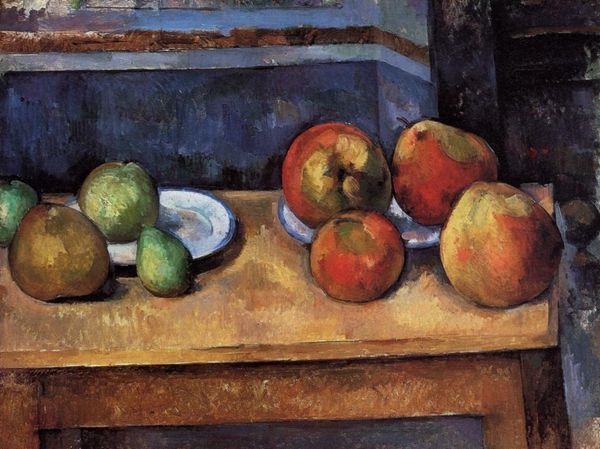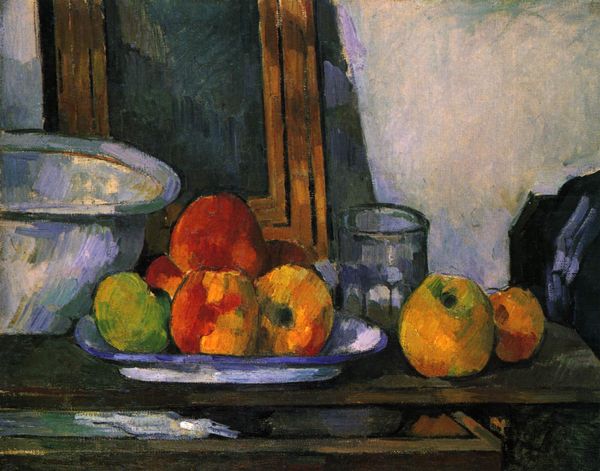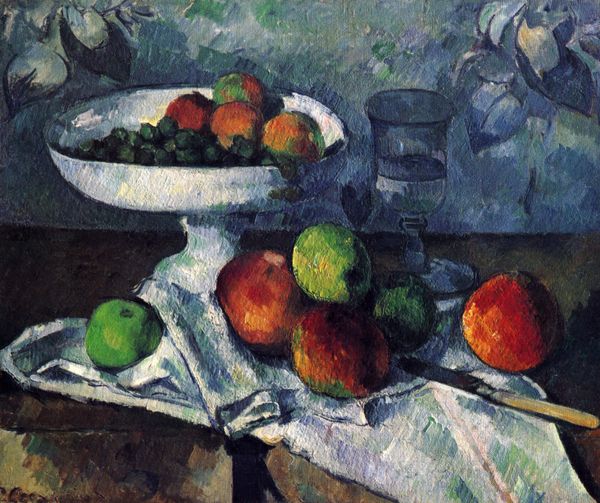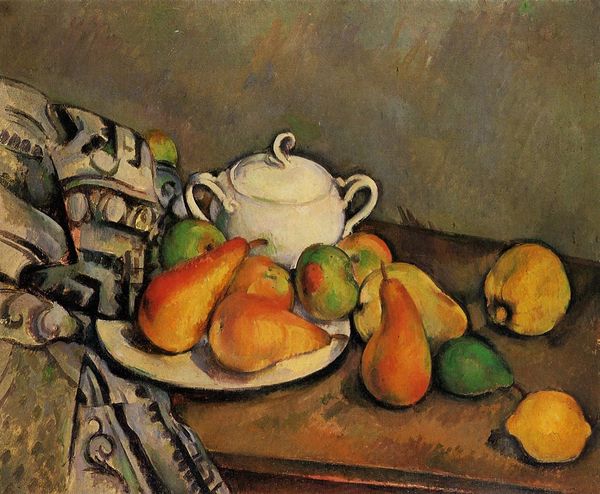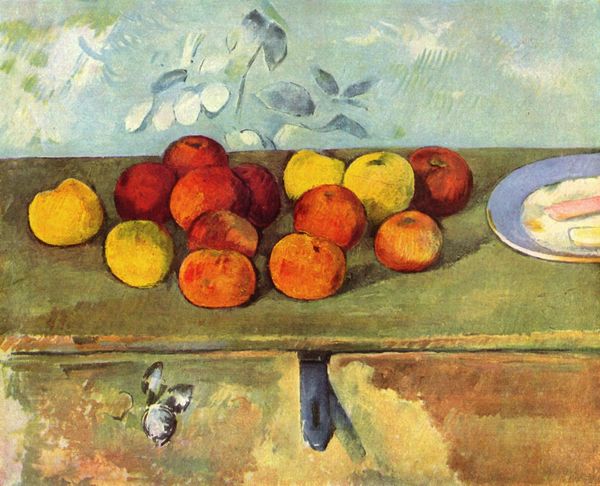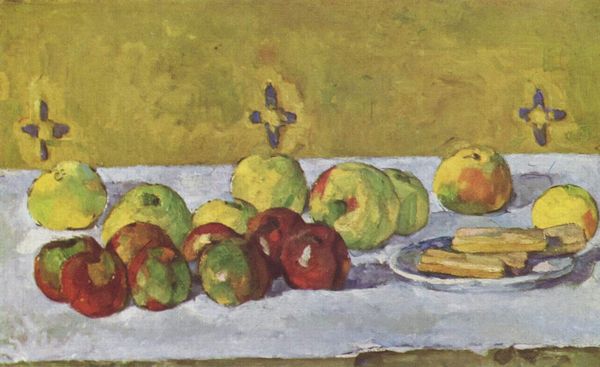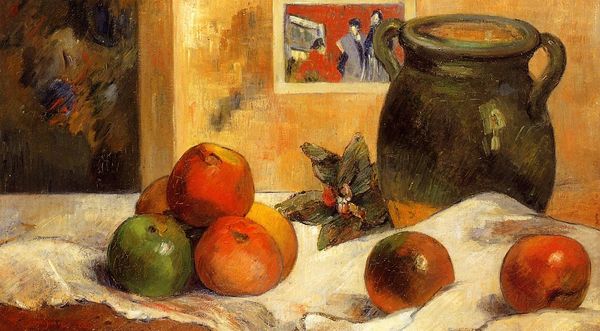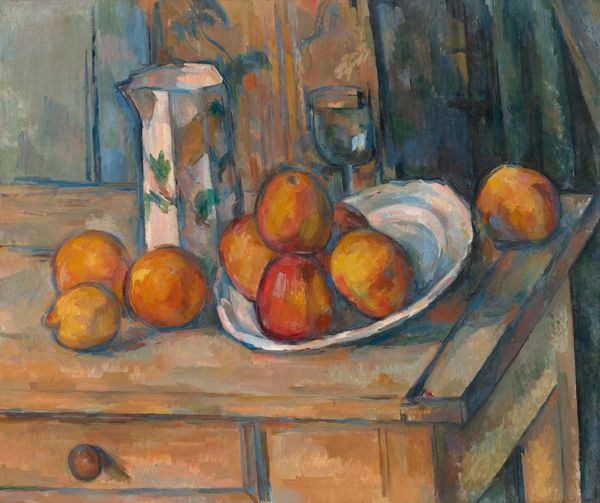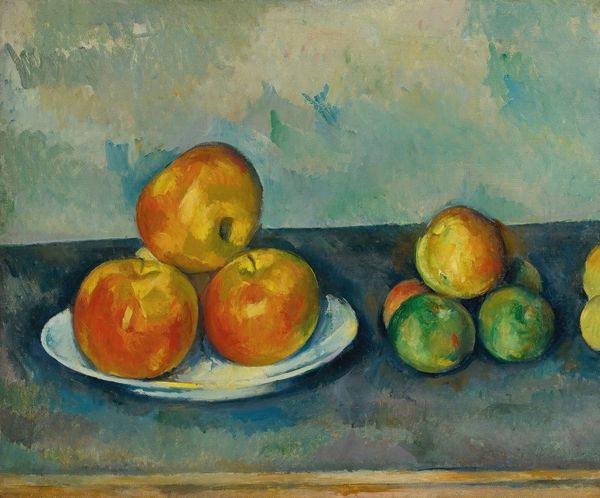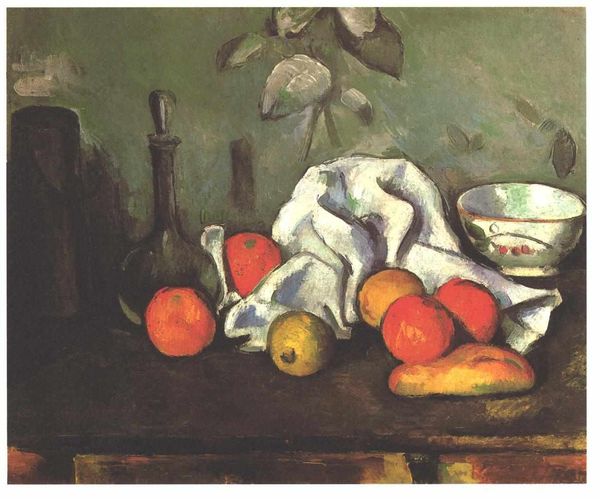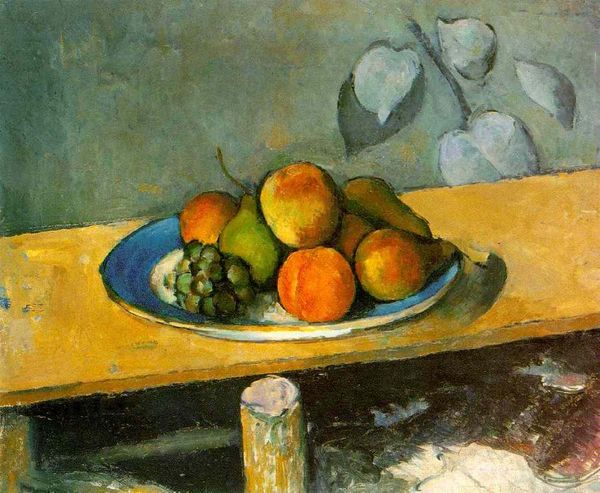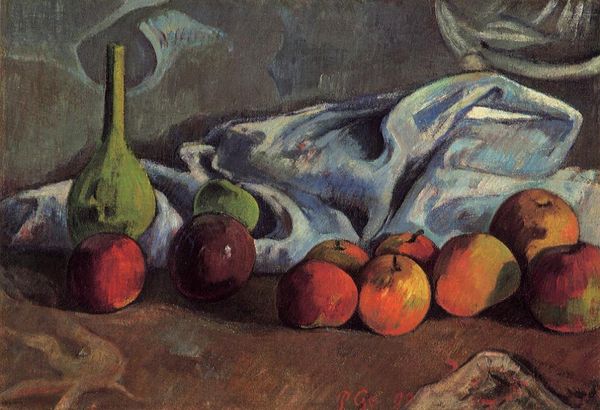
Copyright: Public domain
Editor: Here we have Paul Cézanne's "Still Life with Apples" from 1879, rendered in oil paint with a striking impasto technique. The colors are quite rich. What draws my attention most is how the forms seem built from deliberate applications of pigment, how should we analyze this artwork? Curator: The visible brushstrokes are essential. Notice how Cézanne's technique is closely tied to the means of production. The materiality of the oil paint and his application aren't just representational; they construct the image. It speaks to the labour, doesn't it? The repetitive action of applying pigment becomes as important as the apples themselves. How do you perceive the use of colour impacting this sense of materiality? Editor: I see the color emphasizes the form and construction, rather than creating illusionistic depth. How does this materiality intersect with the domestic setting that we have? Curator: Precisely. "Still life" implies a domestic setting, but think about the consumption suggested. The painting emphasizes that the objects, especially the apples, were not born fully formed. There's a network of labour, cultivation, trade, and then Cézanne's own act of transforming them through painting. This process breaks down traditional artistic hierarchies by elevating everyday objects and examining the means by which art objects are "made." Editor: So you're saying it invites us to contemplate the labour inherent in producing both the still life's subjects and the art itself? Curator: Absolutely. We must contemplate the entire network involved. Now think, how would consumerism at the time affect art’s message of material abundance? Editor: That's interesting; it makes you rethink how we relate to everyday objects, like apples. Thanks, I'm glad to examine how consumption meets labor, materiality, and the painting process. Curator: Exactly! It shows the power of focusing on material conditions to truly understand the artwork.
Comments
No comments
Be the first to comment and join the conversation on the ultimate creative platform.
